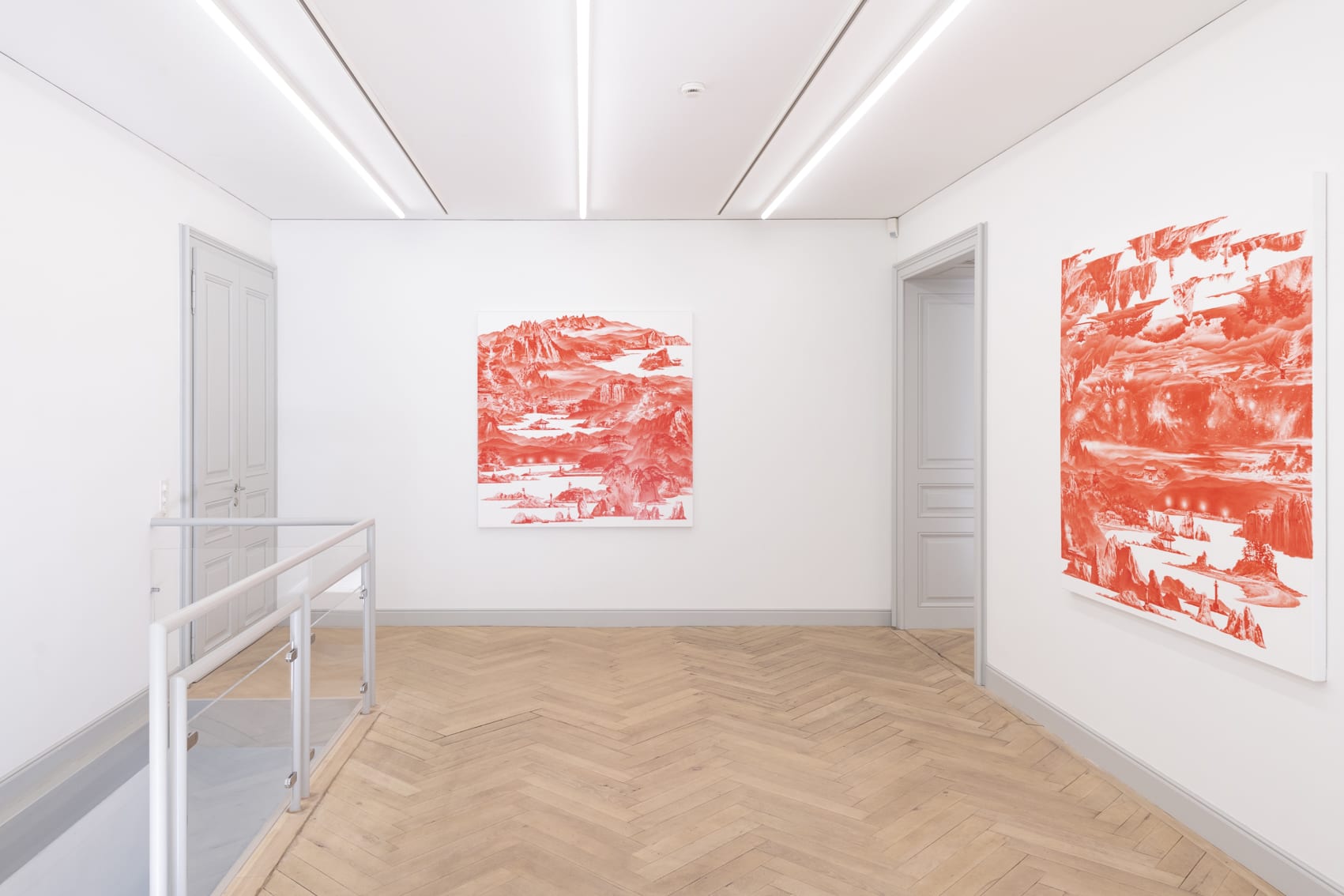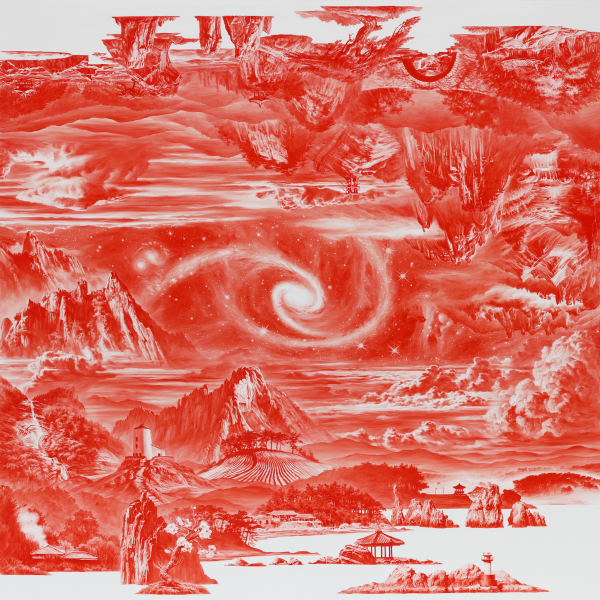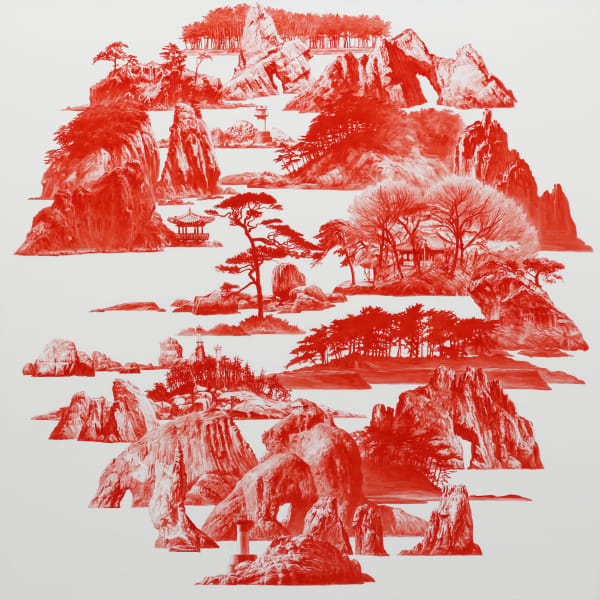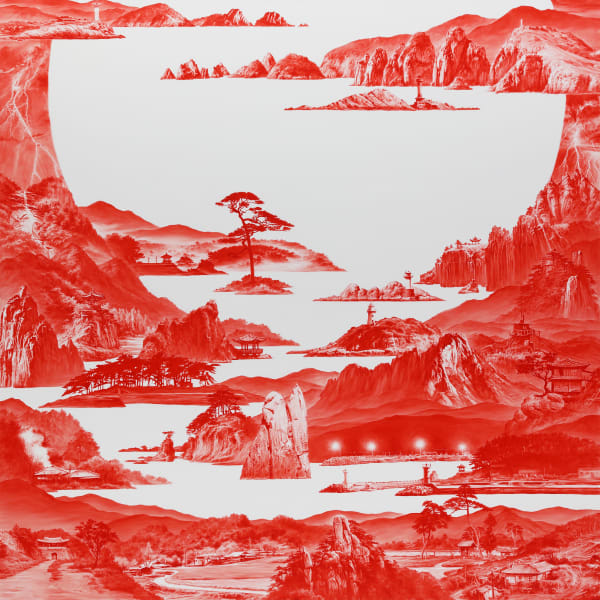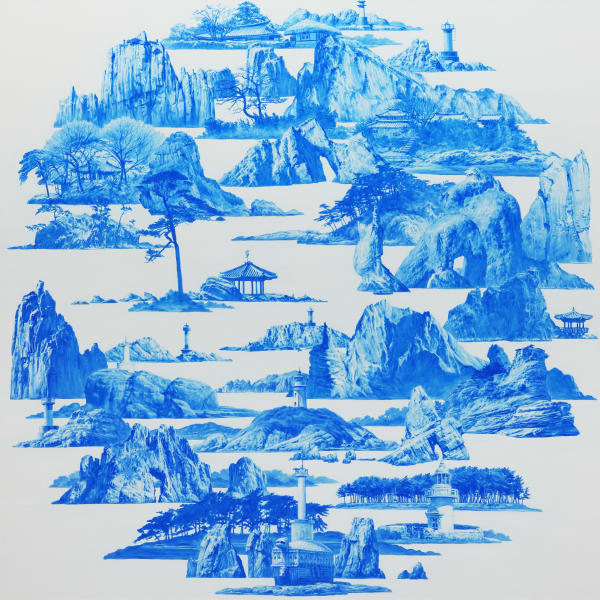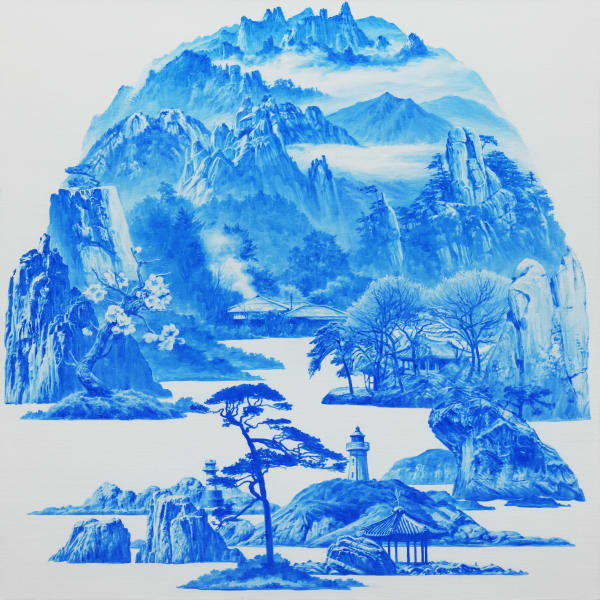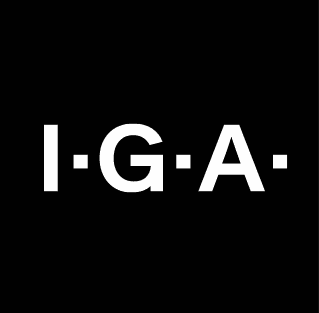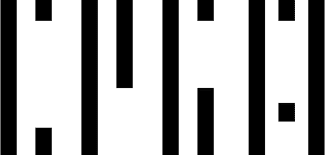-
-
With Red Romance, Galerie Peter Kilchmann is delighted to present the first solo exhibition of South Korean artist Sea Hyun Lee (*1967, Geojedo, South Korea; lives and works in Seoul and London) in the gallery. The artist is renowned for his utopian, surreal, and opulent landscape paintings, known as Red Sansu (sansu: 산수, landscape [mountain and water]), which he creates using various shades of red in oil paint. In these works, the white areas of the canvas serve as both separating and unifying elements. For the artist, red embodies emotions such as grief, pain, fear, and horror, while simultaneously representing a magical, beautiful, and powerful color.The exhibition features paintings created between 2022 and 2025. Two of these works, Beyond Red - 024MAR02 and Beyond Red - 024MAR01 (2024), are in an elongated format measuring 33 × 100 cm. The remaining fourteen paintings are square in shape, ranging from medium to large formats (60 × 60 cm to 200 × 200 cm). Additionally, the exhibition is rounded up by two works on paper.
-
-
According to Sea Hyun Lee, Switzerland is a dream travel destination for many Koreans of his generation. This is partly due to its breathtaking landscapes, which are frequently featured in Korean media. Moreover, images of Swiss and other European landscapes were once widely disseminated, appearing on decorative paintings and household objects. Sea Hyun Lee states that Switzerland seems to have largely preserved its natural beauty—not only in paintings and photographs but also in reality. Unfortunately, he notes, the same cannot be said for Korea. The once-admired landscapes have been relentlessly destroyed or erased by reckless and chaotic urban development. Many of these places now exist only in old photographs or paintings—once radiant in their beauty, they now stand out only through their absence
-

-

-
-
The "Red Sansu" series originates from Sea Hyun Lee's military service, as one of his tasks at the time was to observe the area along the border between North and South Korea through a night-vision device. The landscape, when viewed through the night-vision scope, appeared as though soaked in green hues. It was through this experience that the artist ultimately found his unique artistic approach and began to interrogate the nature and landscape of his homeland. Instead of using the color green, he chose red, as it most accurately represented the emotions he felt while observing through the night-vision device—sorrow and pain over the reality of his country. Red also reflects his awareness of fear and terror. Nevertheless, the landscapes he observed also possessed a magical and beautiful quality. This experience has remained a defining influence on the artist and his oeuvre to this day.
-
The painting technique employed by the artist references the proximity to traditional Korean landscape painting, which, in turn, has its origins in Chinese painting. "Sumukhwa," the Korean ink painting, relies on a single color: black ink, which is diluted to varying degrees with water, creating tones that range from milky white to the darkest black. While the artist does not use ink in his works, he applies oil paint in a similar manner, mimicking ink painting. He plays with the transparency of the color, creating the illusion that we are constantly moving within the same color spectrum, thereby generating a monochromatic effect.
-
The vibrant red works are complemented by several landscape paintings in a color spectrum of royal blue, such as Beyond Blue - 024AUG01 (2024, 130 x 130 cm). Blue is less painful than red, according to Sea Hyun Lee. While the red works can evoke suffocating and even agonizing emotions in the artist during the painting process, the works in blue, on the other hand, are relaxing to create and have a calming effect. The blue allows the artist to focus more on the beauty, mystery, and mysticism within the landscapes, rather than on their constant ambivalence. The blue paintings serve as places of tranquility, where, for once, only beauty can be seen.
-

Galerie Peter Kilchmann
Rämistrasse 33, Zurich
, 10 April - 31 May 2025Be the first to know updates about Galerie Peter Kilchmann
* denotes required fields
We will process the personal data you have supplied to communicate with you in accordance with our Privacy Policy. You can unsubscribe or change your preferences at any time by clicking the link in our emails.
